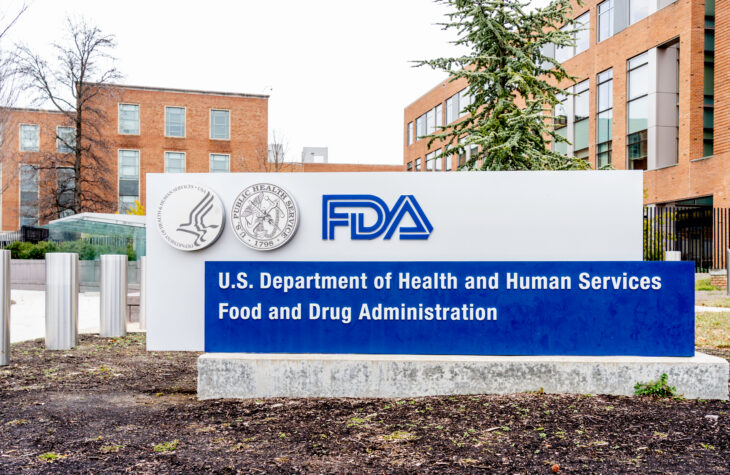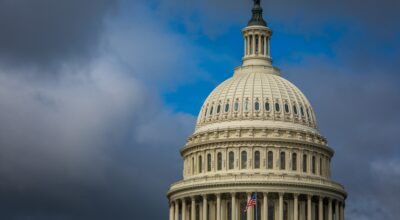
Primer: A Conservative Case for FDA Regulation of Ultra-Processed Food
Introduction
In September 2025, the White House released a strategy document for addressing the four drivers of chronic disease in the United States: poor diet, chemical exposure, lack of physical activity, and overmedicalization.1 The strategy document, part of its larger project to Make America Healthy Again (MAHA), indicates that the Trump administration is serious about taking meaningful and achievable steps to make America healthier. It also reveals that the administration knows of the lateness of the hour; Americans are sicker, more obese, and more metabolically unwell than in any prior generation. These trends are not merely the result of individual failure. The food system has also changed.
Beginning in the 1980s, new ways of processing grains led to the creation of cheap, versatile sweeteners like high-fructose corn syrup, which became key ingredients in many ultra-processed foods. These ingredients made food cheaper, longer-lasting, and more appealing, but the process of creating them removed the natural structures of grains and other source foods that help the body regulate sugar.2 The White House’s MAHA strategy document includes commitments to address Americans’ poor diet by examining the food system and conducting post-market assessments of chemicals and food additives. The administration also said it will review “generally recognized as safe” (GRAS) substances and work on crafting a government-wide definition of ultra-processed foods.3
Commitments to limiting the federal government’s reach should not foreclose federal regulation in this space, as it represents a necessary paradigm shift to challenge the status quo and cut the Gordian Knot in public policy that has enabled a seemingly endless expansion of government health and welfare bureaucracy. The toxic influences in the food and health-care systems have been exposed and cannot be ignored. The Trump administration is leading a reassessment of federal food and welfare policies. The goal is clear: healthier citizens, stronger communities, and a restored republic.
Background
FDA Commissioner Marty Makary is focusing the agency’s MAHA efforts on actively ensuring compliance with industry pledges to eliminate synthetic food dyes through a public-facing tracker and signaling the agency’s intent to hold companies accountable for unmet commitments. The agency is also developing a formal definition of ultra-processed foods, which he says will serve as a consumer guidance tool rather than a regulatory ban. However, once finalized, this definition is expected to inform federal nutrition programs, aligning efforts across the FDA, USDA, and HHS to improve the nutritional quality of foods purchased with taxpayer dollars.4 These are all worthwhile steps, but the FDA could go further.
The debate is underway over how to define ultra-processed food. While precision in definitions has its place, Makary indicated that the lack of consensus on terminology may cause a delay of six months to a year before that definition is finalized.5 The issue of defining ultra-processed foods risks becoming a convenient stall tactic—one that benefits the corporate food giants and hinders reform.
Fortunately, this debate over definitions can be bypassed entirely. Instead of trying to regulate ultra-processed food as a category, which the FDA does not seem to want to attempt, the agency can and should regulate the core components and ingredients that make these foods harmful. And it already has the legal tools to do so.
The GRAS Framework
The FDA oversees food safety by requiring approval of “food additives” under the Federal Food, Drug, and Cosmetic Act. That act defined “food additive” broadly to include any substance reasonably expected to result, directly or indirectly, in its becoming a component or otherwise affecting the components of food.6 However, under Sections 201(s) and 409 of the act, substances that are “generally recognized as safe” are exempted from the FDA’s pre-market approval for food additives. This means that if a substance is GRAS, it can go straight into the food system. FDA relies on self-attestation by “qualified experts” that the substance is safe under the conditions of intended use. Rather than directly affirming GRAS petitions, as it previously had done, the FDA has adopted GRAS notification procedures. Under these procedures, a food company notifies the FDA of its intent to use a substance that the scientific community recognizes as reasonably certain to be not harmful under the conditions of intended use. Importantly, the determination of safety is not made by the government but by consensus among experts. This has been the process since the final rule in 2016, but it had essentially been the regular practice since the rule was first proposed in 1997.7
Even before that, during the Nixon administration, the FDA had initiated a process to reevaluate substances previously considered GRAS using the scientific standards of that time. If a substance met the criteria, the agency would formally affirm its GRAS status through regulation. Nixon’s FDA also created a petition process allowing individuals to request review of substances for GRAS determination or approval. This was the process up until the 1997 proposed rule change, when the agency decided the petition approval process was too resource-intensive to continue.8
After the COVID-19 pandemic, blind trust in so-called “experts” was no longer considered a substitute for accountability, transparency, or common sense. During the pandemic, bureaucrats and corporate interests exploited a broken system, using the guise of science to push policies that harmed everyday Americans. The American people deserve a government that serves them, not one captured by unelected technocrats and rigged institutions. The GRAS system is broken in a similar way: Despite its claims that “experts” are ensuring the safety of Americans’ food, it has become a revolving door for corporate interests. Since companies merely self-affirm an ingredient as GRAS before it hits the food system, what might have been intended as a streamlined mechanism to keep food safe has become an entry point for the chemically engineered additives, flavor enhancers, emulsifiers, and industrial oils that now saturate the American food supply.
The result is a nation increasingly fed not real food but synthetic, hyper-palatable products that are low in nutritional value and high in disease-promoting substances.
Removing GRAS for Key Ultraprocessed Ingredients
On August 6, 2025, former FDA Commissioner Dr. David Kessler submitted a citizen petition to the FDA, urging the agency to revoke the GRAS status of a core set of industrial ingredients found in ultra-processed food, which he terms “processed refined carbohydrates.”9 Under federal law, the FDA must formally respond to any citizen petition within 180 days.10 That statutory deadline gives this petition real teeth as a transparent and enforceable mechanism to compel action from an agency that is often shielded by inertia and industry influence. This effort should be accelerated because it forces Washington’s regulators to confront the evidence they’ve long ignored and leaves industry lobbyists with no place to hide. The process should not be derailed by endless definitional debates over what counts as “ultra-processed.” That’s a stall tactic, nothing more.
The “processed refined carbohydrates” that make up the key components of ultra-processed foods include
- Refined sweeteners such as high-fructose corn syrup, glucose syrups, dextrose, and maltodextrin
- Refined starches and flours that are produced via industrial refinement (called extrusion technology) from corn, wheat, oats, tapioca, and potatoes
- Texturizers and emulsifiers, including modified starches, stabilizers, humectants, gums, and dough conditioners11
Each of these substances allows food manufacturers to precisely manipulate the taste, texture, and addictive properties of what resembles food, but is more accurately described as food-like substances. Perhaps it also allows manufacturers to hide behind the food labels on the back of packaged food substances. The known carbohydrates, flour and sugar, often do not appear on the list of ingredients, so an unsuspecting public is easily misled into thinking they are eating well, even healthily. Indeed, Kessler’s petition would not regulate “flour, table sugar, starch, salt, or corn syrup.”12 This makes the important point that those are actual foods and not inherently harmful to human health. But when they are technologically formulated, through a process of extraction, chemical and physical modification, and reassemblage with additives, and then packaged. That processing changes the ingredient, altering it from its original form into a new substance with deleterious effects.
Kessler’s argument is straightforward: While these ingredients may have once been deemed safe in isolation, their widespread and cumulative use in the modern food supply, especially in combination, has created a health hazard, and they are the “primary causal determinants of metabolic harm.”13 The simplified list of specific harms Kessler highlights is
1. Hyperinsulinemia and metabolic dysregulation
2. De novo lipogenesis, hepatic fat, ectopic fat deposition, and inflammation
3. Insulin clearance and resistance
4. Increased consumption independent of calorie content
5. Reward signaling, hedonic overdrive, loss of control over eating, and overconsumption
6. Speed of absorption and glycemic load
7. Eating rate
8. Hypertriglyceridemia
9. Nutrient dilution
10. Low satiety per calorie
11. Use in ultraprocessed foods with increased energy density
12. Synergistic rewarding effects with fat and salt
13. Gut microbiome dysbiosis
14. Lower dietary fiber intake
Put another way, the current GRAS approvals are outdated and fail to account for long-term exposure, metabolic dysfunction, and synergistic effects in processed food environments (meaning chronic exposure to multiple food additives over the course of a lifetime).14
The fact that federal law requires the FDA to formally respond to any citizen petition within 180 days gives the petition a unique power: It forces regulatory consideration of evidence that industry and bureaucrats might otherwise ignore. The mechanism is transparent, enforceable, and rooted in statutory authority.
Kessler’s petition does not seek to ban foods or tell Americans what to eat. Rather, it aims only to revoke outdated assumptions about certain additives’ safety. If his petition were successful, it would force corporations to prove that these substances are safe and deserve to be in our food in the first place.
It may seem unusual to find conservatives calling for tighter FDA regulation. But prudence and judgment have always been conservative virtues. This effort is not about banning cheeseburgers or policing what Americans can eat. It is about ensuring that when Americans shop at a grocery store, they are not unknowingly buying food-like substances engineered to be addictive and disease-promoting. Currently, the food system is dominated by a metabolic disorder industrial complex, effectively shutting out producers of genuine, nutritious food. Removing these unregulated barriers to entry is an essential precursor to a market for real food that is neither addictive nor disease-promoting.
The FDA already has the precedent for solving this problem. In 2015, it was determined that partially hydrogenated oils (i.e., artificial trans fats) were no longer GRAS due to new scientific understanding of their long-term health risks. The same argument now applies to the refined sugars, starches, and synthetic additives that make up so much of ultra-processed food. The data FDA used to grant GRAS designation to these processed refined carbohydrates failed “to assess the long-term effects on insulin dynamics, blood lipid parameters, energy partitioning, inflammatory markers, brain reward signaling, or visceral adiposity,” as Kessler writes in his petition.15 Because of this failure, the GRAS determinations need to be reassessed.
Conclusion
Making America healthy again requires bold action and strategic use of federal power. The FDA now has a citizen petition before it to remove GRAS status from the industrial ingredients driving the obesity and chronic disease epidemics. There is no need to wait for Congress and no need to pass new legislation. The tools to fix these problems already exist.
This is a moment of opportunity for the Trump administration. Delivering on the promise of MAHA means standing up to the food lobby, cutting through bureaucratic inertia, and restoring the FDA’s integrity. It means protecting the American people from the corporate-engineered food that is quietly killing us from within.
The America First movement has locked arms with the Make America Healthy Again movement; they share the goals of putting the families and health of Americans before other interests. The well-being of the American people depends on a food policy that reflects that reality.
Endnotes
1. MAHA Commission, Make Our Children Healthy Again, White House, (September 9, 2025, https://www.whitehouse.gov/wp-content/uploads/2025/09/The-MAHA-Strategy-WH.pdf%20.
2. David A. Kessler, “Petition to Limit the Exposure of Refined Carbohydrates Used in Industrial Processing in Order to Prevent Obesity, Diabetes, and Cardiovascular Disease in Children and Adults,” Consumer Federation of America, August 2025, 24–26, https://consumerfed.org/wp-content/uploads/2025/08/Kessler-Petition_signed.pdf.
3. MAHA Commission, Make Our Children Healthy Again, 8.
4. PragerU, “Commissioner Marty Makary on What MAHA Really Means at the FDA | Real Talk | PragerU,” YouTube, October 16, 2025, https://www.youtube.com/watch?v=MKWprhJ51Wc.
5. PragerU, “Commissioner Marty Makary.”
6. Paulette Gaynor, “How U.S. FDA’s GRAS Notification Program Works,” U.S. Food and Drug Administration, December 2005/January 2006, https://www.fda.gov/food/generally-recognized-safe-gras/how-us-fdas-gras-notification-program-works.
7. “Generally Recognized as Safe (GRAS),” U.S. Food and Drug Administration, October 17, 2023, https://www.fda.gov/food/food-ingredients-packaging/generally-recognized-safe-gras.
8. Gaynor, “How U.S. FDA’s GRAS Notification Program Works.”
9. Kessler, “Petition to Limit,” 3.
10. 21 CFR 10.30 (2016), . https://www.law.cornell.edu/cfr/text/21/10.30.
11. E.g., mono- and diglycerides of fatty acids, DATEM, sodium stearoyl lactylate, polysorbates, azodicarbonamide, L-cysteine, calcium peroxide, propylene glycol, carboxymethylcellulose, methylcellulose, regelatinized starch, modified food starch, and dextrins.
12. Kessler, “Petition to Limit,” 4.
13. Ibid
14. Kessler, “Petition to Limit,” 5.
15. Kessler, “Petition to Limit,” Ibid.





